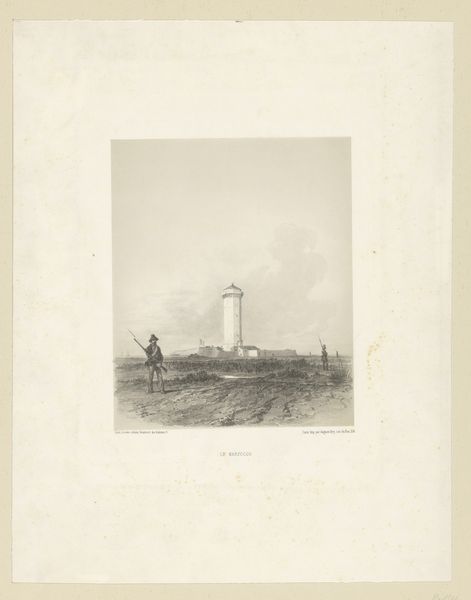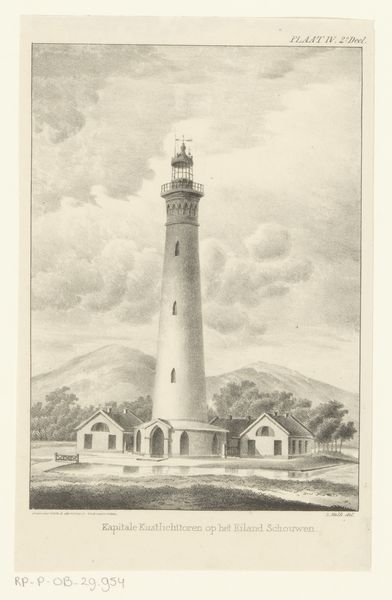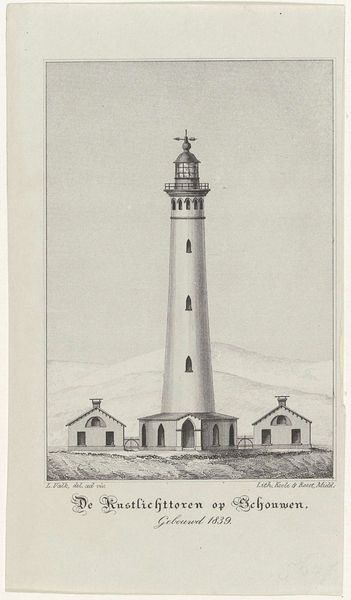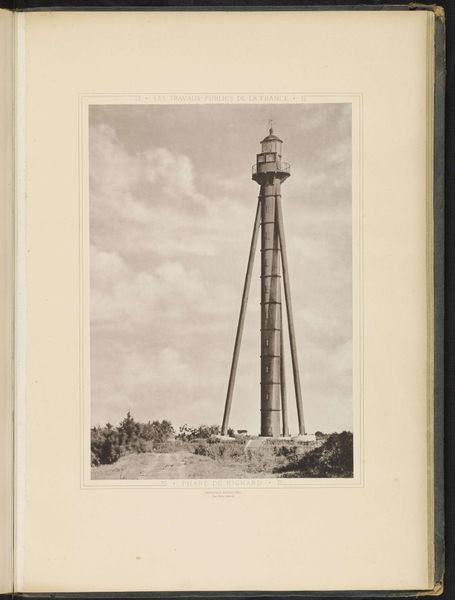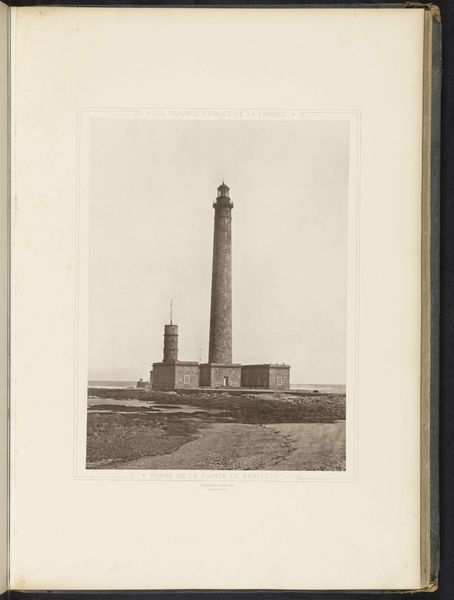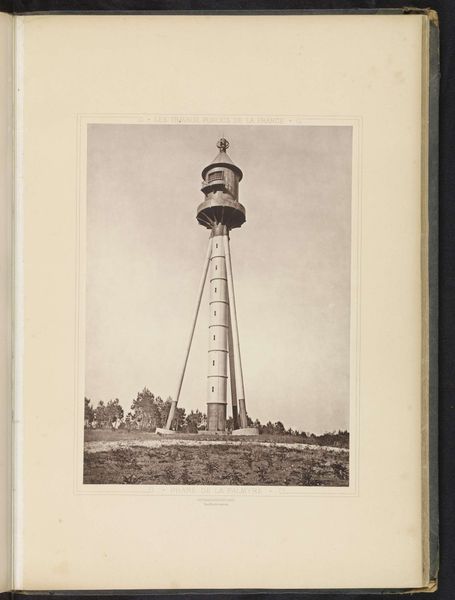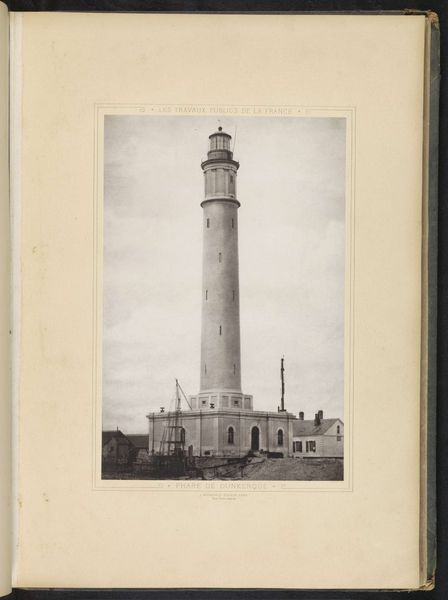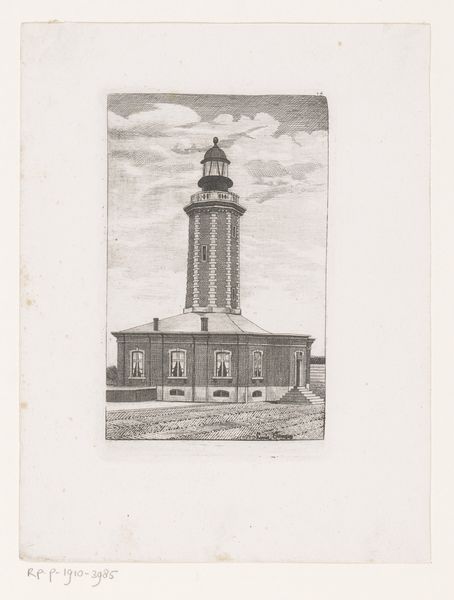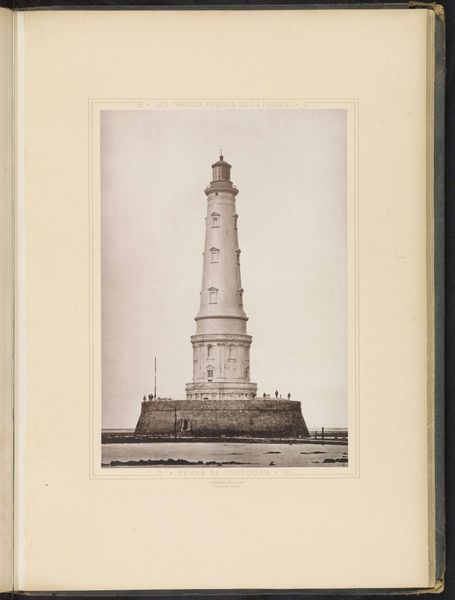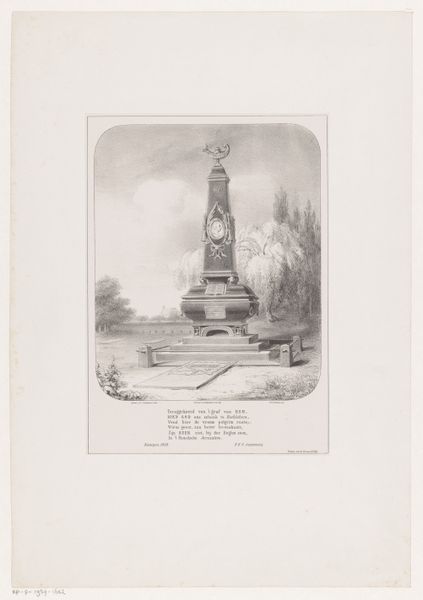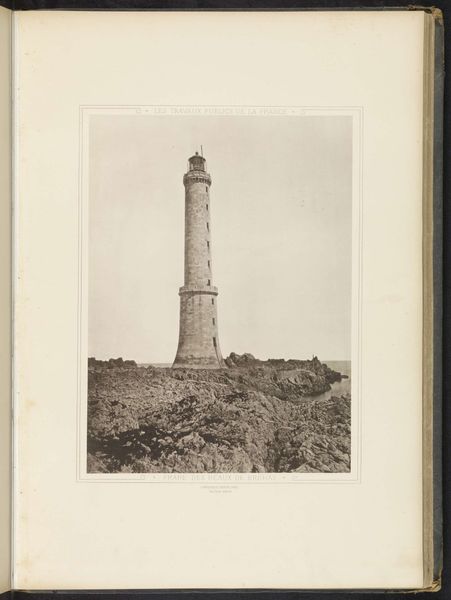
print, engraving
#
pencil drawn
#
neoclacissism
# print
#
old engraving style
#
landscape
#
archive photography
#
geometric
#
line
#
cityscape
#
engraving
Dimensions: height 540 mm, width 416 mm
Copyright: Rijks Museum: Open Domain
Curator: Standing before us is Paulus Lauters' "Vuurtoren J.C.J. van Speijk in Egmond aan Zee, 1841," currently held at the Rijksmuseum. It's an engraving from 1841. Editor: Oh, immediately I'm struck by this eerie calmness, almost ghostly, about this scene. The way the light pierces through the clouds feels like a spotlight, but on…loneliness? Curator: Well, the piece coincides with a moment when printmaking, and engravings in particular, became key in disseminating ideas. Consider this: the monument is the key object being immortalized through distribution via this very print, expanding the reach and importance of this lighthouse, no? Editor: Right. It does speak to the era's fascination with progress and control over nature. But artistically, the contrast between the sturdy lighthouse and the ephemeral light is captivating, how even something as sturdy as stone or brick becomes softened or temporal somehow. Like a ghost made of light. Curator: Ghosts made of light... A fine, perhaps unintended byproduct of the artistic process here, wouldn’t you agree? Lauters probably conceived of this primarily as documentation and promotion of national symbols—an agenda that becomes entwined in these aesthetic and artistic choices, and this engraving allowed for copies to circulate, reinforcing a Dutch identity through images of its infrastructure. The materiality of this artwork facilitated specific cultural ends. Editor: Which brings us to today. To experience the print as an artwork and national emblem. I appreciate your take and focus on the production context and intent here. I find myself circling back to its overall effect: an isolation that feels profoundly…modern. It reminds us of our fleeting existence within a landscape being dramatically altered around us. Curator: True, true. The piece does capture that particular interplay between man and nature. But I do wonder how it speaks about industry, infrastructure, labor and class now? Afterall the original print making would require a high level of collaborative artisanship that, to me, underscores that production is as much a facet of the artistic project here as that ‘spotlight’. Editor: Exactly. What begins as something structural can transform into something beautifully unsettling. The tension between production, utility, artistry and feeling opens up our interpretation. Curator: I think we've cast some light on this lighthouse ourselves. Thanks for the illuminating perspective, perhaps even spotlight.
Comments
No comments
Be the first to comment and join the conversation on the ultimate creative platform.
